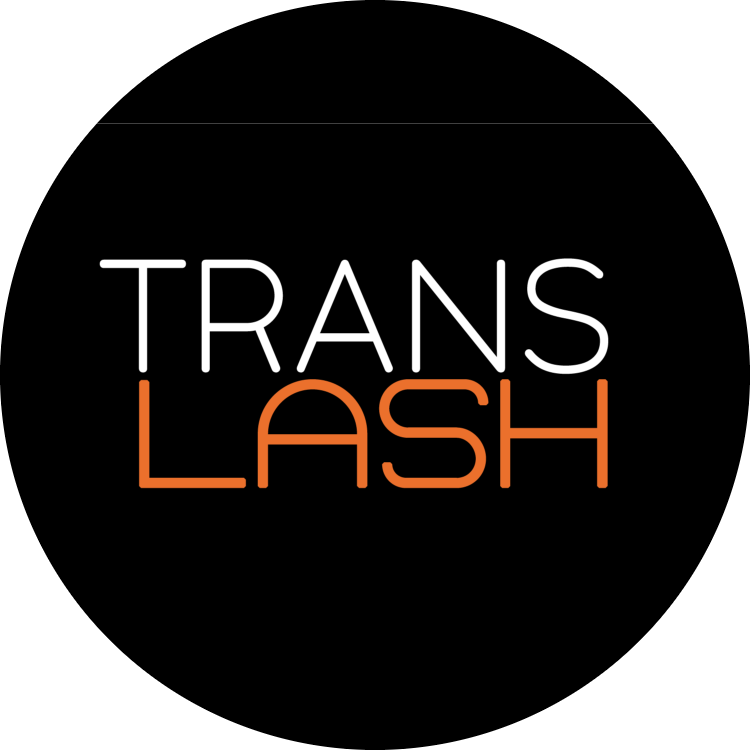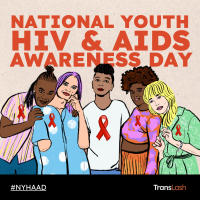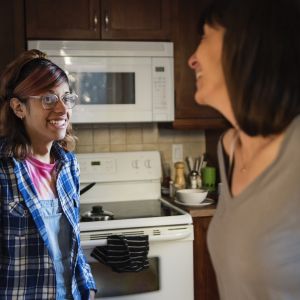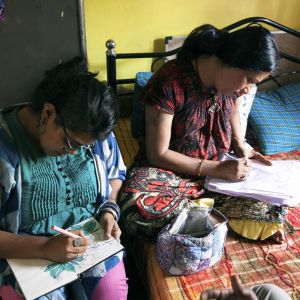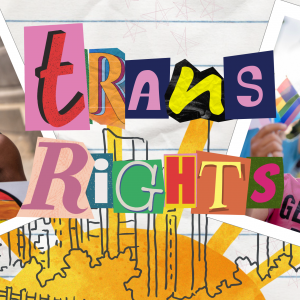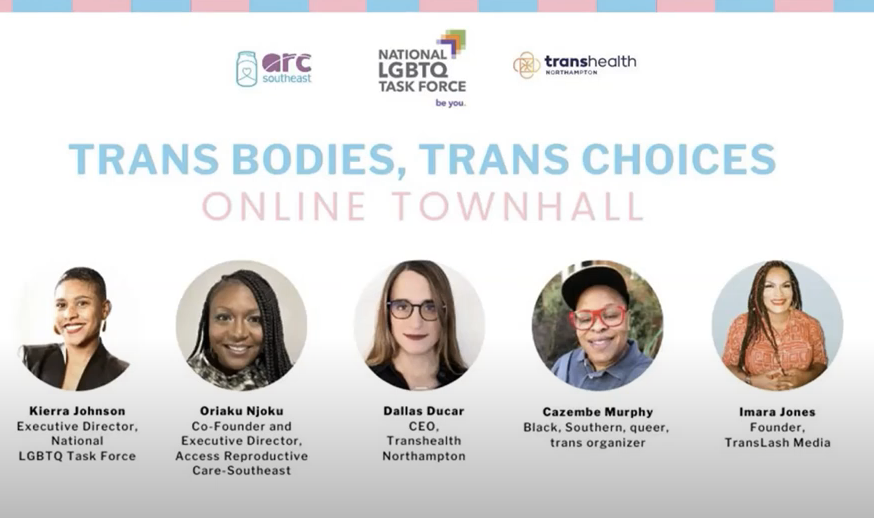by CJ Miller
Trans Representation in Education
Julia Rich or Mx. Rich as they are known to their students, is a middle school teacher in Los Angeles. Mx. Rich runs a maker’s space, teaches a shop course to 6th graders which focuses on fabrication in both physical and digital mediums, and serves as the faculty advisor for their school’s Gender & Sexualities Alliance. Last year Mx. Rich had 27 students come out to them as trans, two-spirit, or non-binary. The population of their school is approximately 700. And these are just the kids that felt safe coming to their teacher and disclosing this information. Half of the 27 students aren’t even enrolled in one of Mx. Rich’s classes. Mx. Rich believes a dominant reason these kids felt safe coming to them is because of their own identity as an openly non-binary queer member of the faculty. “This is where I do think visibility does really matter…in having teachers be actively out.”
When Mx. Rich first came to the Geffen Academy in 2019 there were 2 kids in the GSA, and now they have over 50, making it the biggest affinity club on campus. They’re extremely proud of how the GSA has expanded. They cited student-initiated collaborations with their Black Student Union and Asian Americans & Pacific Islanders affinity groups to illuminate points of intersectional identity politics and address harmful elements of white queerness in its accord with capitalist systems. The heart of the material Mx. Rich is teaching in their curriculum is the cultivation of unfettered identity through what they describe as “queer world-building”. The initial unit of their curriculum is “Mindfulness for Makers” and the first project in the unit is the fabrication of a “Magical Identity Being”—the creation of a small avatar that serves as an extraction of internal views of self. Breadth for expression is built into how the avatars can be fabricated and the project opens up channels for self-exploration. “After that lesson that is when a lot of kids will come out to me,” Mx. Rich says.
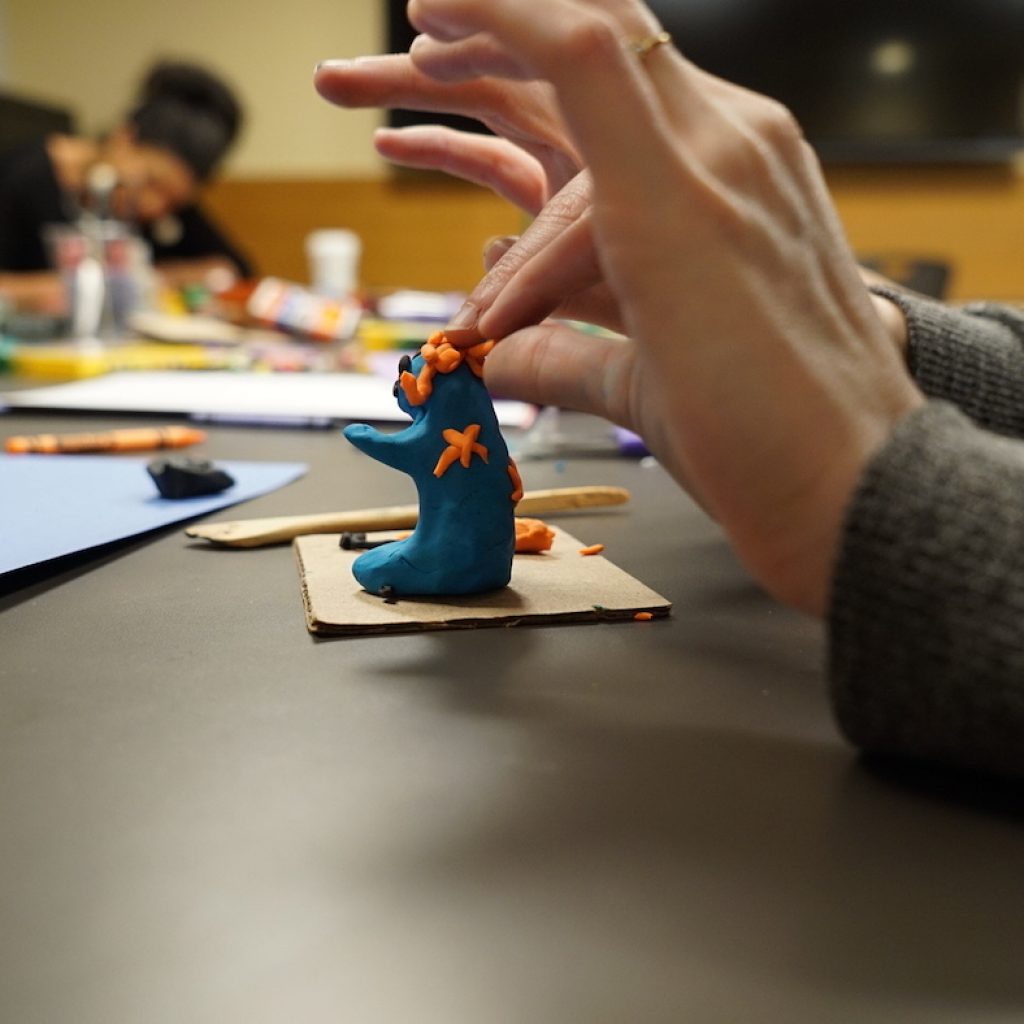
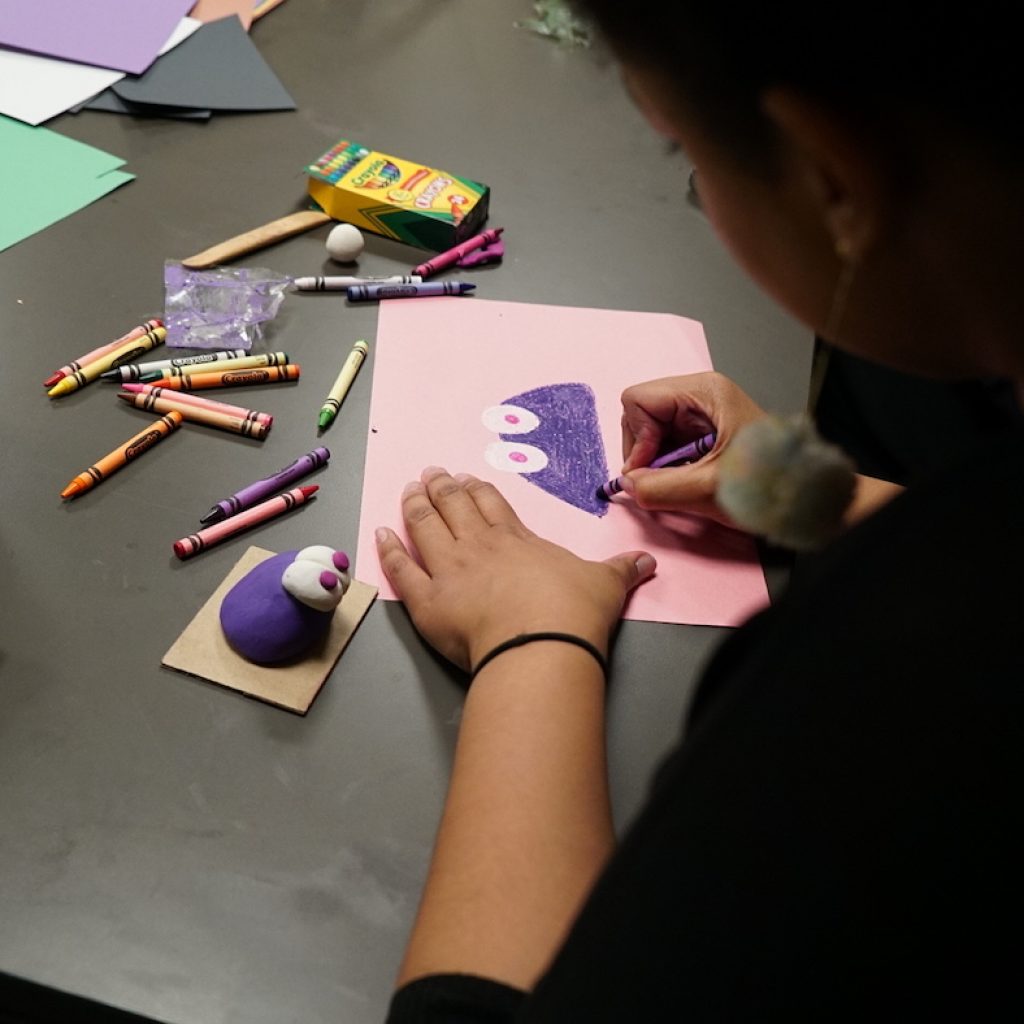
Beyond assignments, there are innumerable ways Mx. Rich provides similar opportunities in their classroom. At the onset of every new school year, they give their students a form to fill out which includes sections on name and pronoun usage. The form also includes various criteria to support the safety of trans and non-binary students including separate situational entries for what name and pronouns to use—in private interactions between themselves and Mx. Rich, with peers and faculty, and in front of parents or guardians. At the start of the year, they also offer their own pronouns, establish a quick background on what that means for them specifically, and consistently invite their students throughout the rest of the year to ask questions. It is a space to engage in an active conversation about what identity means and a way to cultivate deepening ways of relating to each other. They also hold space for five minutes at the close of every class for what Mx. Rich calls the “hot seat”—where they open themselves to any question the students may have without restrictions, which Mx. Rich says often involves questions of gender. I asked them if they ever felt like they had to say no to one of these questions and this was their reply.
“I make space for a “no” to be given at any point but I’ve never really had to say no to a question. There are times I might not give the answer that they specifically asked for. Once someone asked what genitalia I had and I said “I’m not going to answer that.” [laughs] But let’s have a conversation about what that question means. Why do you ask that? Why do we think about genitalia when we think about gender, things like that. We have honest conversations with each other. We are very open. When you’re a 6th grader you ask questions about anything and I’m glad to support that. I appreciate that these questions come from a place of curiosity. I did mention that we will not be asking that question of anyone else basically [laughs] but this is not the time or place to be critical of questions. If a parent were to ask me that question that would be a completely different situation. I’ve never had an issue with a student, only adults.”
Mx. Rich also conveyed how lucky they feel to be teaching in a school that allows them to inhabit the educational space in the way they do. When they taught in the New York City public school system they experienced a great deal of pushback. No doubt this is an experience that a great many teachers must be experiencing operating in states where anti-trans legislation is taking shape and being more widely implemented. Direct regulation of public, private, and parochial schools is done by state and territorial governments. When the states are implementing heinous and violent anti-trans legislation, what does that mean for public education efforts to include and teach about trans, non-binary, and GNC identity in any context?
Competent Educator Support
Even in places like California where state policies have been codified and implemented to increase protections for trans people, endeavors to make schools more inclusive for trans and queer youth do not move unimpeded. Joel Gemino, Youth and Family Services Manager for the Long Beach LGBTQ Center, has firsthand experience working to make schools safer for TGNC youth. “Even in a community that pushes queer inclusion, I’ve experienced more vocal pushback than I have in 15 years of doing this work.” Joel noted that in the weeks following a tweet from the office of Florida Gov. Ron Desantis which addressed the recent “Don’t Say Gay” bill as protection from “Groomers”, there was a notable increase in the language usage. Parents and parent groups were using this uninformed language to attack students and challenge the character of the teachers, faculty, administration, and even external [from school employment] entities like Joel and the LGBT Center working to make schools safer and more inclusive.
There are moments of profound brightness and progress in Joel’s work as well. The work he does is multifaceted, but his educator trainings (and I’ve heard this directly from teachers’ who have taken one of Joel’s trainings) have a particularly large and resonant impact. The trainings serve to develop a foundation for faculty and administration that will help them move in greater alignment towards LGBTQ+ youth equity. They learn about the functions of cisheteronormativity and how detrimental it can be to physical, emotional, and mental safety. Joel also empowers these educators to take their own steps in improving equity and inclusion, knowing the beneficial ramifications and also the legal protections in place to help them (at least in part, in California). The results are clear. The offering of pronouns from teachers, the hanging up of trans rights posters, or a giant rainbow flag—even these little signifiers, which teachers have felt more comfortable doing after a support training from Joel—aid in establishing an environment where kids feel safer being themselves. Joel said he gets a lot of feedback from students about how little moments of seeing themselves represented in class will completely make their week.
The trainings are not about memorizing a particular script and don’t center a lot of language directives but are intended to empower autonomous action in alignment with principles of equity and inclusion. I offer this example from Joel:
“There was one teacher who had a child come out to them after a training of mine. The child wanted to go by their name and use their correct pronoun. They hated being misgendered. They felt comfortable with this teacher, knowing they were one of the few teachers who had taken one of my training sessions. The student told the teacher, ‘I like writing my name on the assignment, can I write this name? I hate writing my legal name.’ So then the teacher said, ‘Well, what if your parents ask to see your work? You know, I have to give it to them.’ And so together they came up with a plan that I never instructed on. They decided to use the student’s last name or student number. I think there is hesitancy from some teachers to do this work and they’re still afraid to offend or afraid that their job might be in danger, but there is an ability for a teacher to feel more comfortable doing this work.”
Josephine, a public school teacher in Washington state has been navigating the challenging complexities of how to make space for her trans students in the curriculum and in the physical space of the school. She expressed difficulty finding ways to introduce trans and non-binary representation in her coursework. She has faced resistance from other teachers and the machinations of her school which places emphasis on teaching for test scores. Test scores determine the funding allocations for the school, but nothing on these tests acknowledges trans or non-binary existence. Not only is there little pressure to expand the inclusivity of the curriculum, but the staff can also be outright hostile. Some of her fellow teachers have taken harmful action against trans and non-binary students at the school like misgendering them and even non-consensually “outing” some of the kids to parents and faculty. Josephine has been doing whatever she can to push back, including working with the administration to deepen their trans competency and to establish broader protections for the trans, non-binary, and GNC student population. There is an all-gender bathroom available to all students but Josephine has heard directly from her kids that they’ve faced harassment when using it. As the school’s only openly transgender teacher, and because of her visible efforts at increasing protection, these students feel safe confiding this type of information in her. So she’s currently working on a proposition to convert one of the faculty restrooms to a student restroom that will be available only to these students.
Eradicating Transphobia At the Root
From what I gathered speaking to people in my community who work with youth and from my own experiences, I know that as far as gender goes—the kids are alright. Most of these kids thoroughly understand how the gender binary is a fabricated, imposed concept that is worth divesting from. What concerns me is how we position them in a system that defaults trans-affirming health care as a dominant point of access for their safety. The dominant model of health care that functions as an extension of the binary is aimed at transforming trans bodies to appear the most like cis men or cis women within that framework. This is how many physicians are approaching surgical procedures, HRT, and other types of care. It is also how the vast majority of psychological evaluation that supports access to these procedures function.
Foundational support for educators to empower them in making space for LGBTQ+ youth—expansive in its capacity to hold identity and expansive in the curriculum—is the type of work that will support a world where trans and non-binary youth will be celebrated for their existence. A world where they won’t feel like they have to hide in order to find safety and love.
Featured image by Laker.

CJ Kitten Miller (she/her/they/them) is a white, intersex, non-binary trans femme artist and educator. Her work as a poet, illustrator, dancer, musician, and organizer collectively focuses on themes of trans liberation, societal examination, and politicized self-evaluation to dismantle systemic oppression. She is the co-creator of soyouthink.org a website and distributable pamphlet on expanding gender education and trans sensitivity basics. The pamphlet and additional art from CJ were featured in Save Art Space’s Queer Futures (2020) exhibit which utilized billboards as exhibition space throughout Los Angeles. She has worked with organizations such as the LA LBGT Center, The Feminist Center for Creative Work (previously WCCW), Junior High, and UCLA to present educational workshops and public art projects for trans + queer community advocacy. CJ has contributed interviews, reviews, and opinion pieces to Autostraddle, Razorcake Magazine, Maximum Rocknroll, and New Noise Magazine. Their most recent poetry collection LipsTick Volume 3, a diary and emotional outpouring of intersex, trans femme history and experience, was self-released in 2022. She is a founder and active curator for Trans + Queer Poetry Night, a recurring performance event held at Junior High. She is the founder and lead instructor for Leo Moon, a movement class aimed at creating a more liberated space for trans, non-binary, two-spirit, intersex, & GNC bodies. They are also a certified Intimacy Coordinator, trained through SAG accredited Centaury Co.


